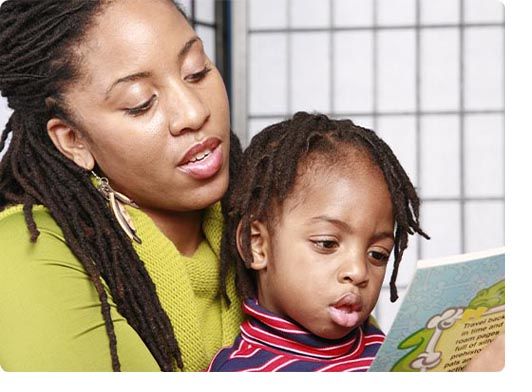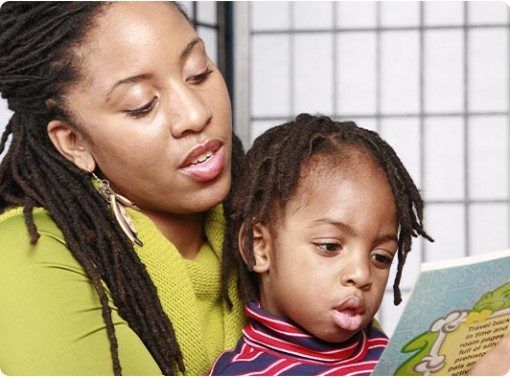Encouraging Parental Engagement with Reading at Home

Research shows that encouraging pupils to read at home can increase their ability to read at school and improve well-being.
“Sharing a story with your child is one of the most incredible things you can do for them.” The Book Trust.
Reading together in a fun and relaxed way not only helps children get hooked on reading, but it is also one of the best ways for families to bond, spend quality time together and make memories that will last a lifetime. Sharing books with children and talking about the story will also help to deepen understanding and develop language.
How can teachers encourage parents and carers to read more at home with their children? We explore some strategies you can use in this guide to help boost reading confidence by encouraging families to have fun sharing books at home, even after children start to read on their own.
A good place to start is by providing information for parents and carers to give them ideas and inspiration on how to begin or improve their experiences of sharing books at home. Involve families in creating a collective reading for pleasure culture within your school community by downloading our free ten-minute PowerPoint: Sharing Books at Home. Full of parent-friendly practical tips and ideas, this short presentation is perfect for librarians, teachers or teaching assistants to share with parents at the end of a school day or as part of an open day event. Or why not download this free PDF leaflet: 5 Fun Ideas for Family Reading at Home which can be printed and sent home in book bags, or attached to emails and sent to parents directly.
5 fun ideas for family reading at home:
1 – Encourage curiosity!
Asking questions and talking about the book is a great way to form connections, develop understanding and make reading even more enjoyable. Start by discussing the front cover and what it suggests the book could be about. Then share ideas about what you’ve been reading. You could talk about the characters, something that has surprised you, what something reminds you of or how it made you feel.
You might ask questions like, “how did it make you feel when….”, “why do you think this happened?”, or “what do you think will happen next?” then give children time to think and respond (you can count to six in your head if that helps!). Don’t worry too much about them getting things ‘right’, everyone uses their imagination to think about what happens in stories and there are often no right or wrong answers, especially as children have the best imaginations!
Make sure you give your child the chance to ask questions too. Children, (and adults!), often enjoy reading the same book again and again – this provides an important opportunity for children to get to know the story well, develop confidence and increase comprehension and vocabulary.
2 – Get playful
Think about where and when to read together — curl up on the sofa, in bed, or even make a book den out of blankets and pegs! You might be reading the same book together, reading different things at the same time or getting your children to read together. Children who are worried about reading aloud sometimes love reading to a family pet. This can be relaxing and fun for you all and just a few minutes each day can have a big impact on children of all ages. Be guided by your child about when you feel is the best time to read together – what matters most is that they enjoy it.
Why not try acting out your favourite parts of the story together, using different voices and dramatic actions. Have fun letting go!
Helping your child to see reading as play time rather than work time is one of the most powerful ways to help your child engage in books and become a lifelong reader.
3 – Get creative
Bring reading to life by getting involved in some crafty activities related to the book. It provides the perfect opportunity to talk about the story you’ve been reading too.
Why not try drawing some of the characters or creating a picture to show a different setting. You could then use these to retell the story or make up your own version.
4 – Get imaginative
Help engage your child in a way that suits them. This could mean creating treasure hunts that include finding similar objects that were in the book you shared, making a recipe that you read together or play a game where you pretend to be the characters in the book. Try using different voices, sound effects or actions as you read, you could even make sock puppets if you enjoy crafting.
Gift books as presents. Encourage book swaps between friends and family and encourage your child to always carry a book with them, so they are never bored! Charity shops often have good selections of children’s books and mean children can have access to a variety of stories they can read. Reading can be encouraged to read on the bus, while waiting for a sibling to do an activity, or when they need a bit of quiet in a busy household.
5 – Get ready to read anywhere, anytime!
Reading isn’t limited to storybooks! We are immersed in a world of print, which can be shared anywhere and at any time. Read yourself and help your child to join in, this could be anything, including…road signs, leaflets, magazines, recipes, comic books, travel brochures, sports programmes, toy boxes, or the back of the cereal packet! There are some great children’s magazines that school or parents might want to subscribe to such as The Week Junior, National Geographic Kids and First News. Local libraries are perfect for finding a rich and diverse mix of story and factual texts, as well as poetry and audiobooks.
Top Tips for Teachers:
- Invite a member of the local library service into school to give a talk or arrange a visit when children can join up. Send information home to parents about library membership, reassure them about potential barriers such as late fees, and inform them about events that are currently running. You can encourage them to have fun choosing new books and finding favourite authors. This could be followed up with details of new book releases and book reviews, to help maintain interest and engagement. The Summer Reading Challenge is a great initiative to keep children reading over the holidays and schools can encourage and celebrate participation in this.
- Signpost families to helpful websites, such as Book Trust and National Literacy Trust. These sites also include tips for reluctant readers, activities to do with your child at home, a book finder and tips for reading with your child.
- Make a book list of ‘Recommended Reads’ for different classes or year groups – including contributions from the children and teaching staff. This could also spark discussions at home about the books different family members enjoyed sharing as a child. Increase access to interesting material for pupils and boost the selection on offer in class libraries by visiting Primary Reading Books, where you will find a wide choice of the very best children’s fiction. You can also find Best New Publishing collections, featuring top recently-published books, alongside our full range of books, which all come with FREE protective jackets.
- Set up a school or class reading display of photographs sent in from home celebrating books that have been read outside of school and supporting the idea that reading can happen anywhere! You may get a picture of someone reading a book in a homemade den or cuddling up on the sofa with their pet.
- Share the benefits of reading, not just academically but also the positive and more recently vital part it can play in promoting good mental health and well-being. The benefits of reading are well documented and include; reducing stress levels and nurturing calmness, increasing vocabulary enabling children to better articulate their thoughts, ideas and feelings, offering an ‘escape’ into another imaginative world or helping children to understand difficult issues, through the words of others.
- Demonstrate the value of audiobooks to parents who might lack confidence or experience reading aloud. Audible make a charge for their audiobooks, but local libraries offer a selection of audio stories. Teachers could also record and share videos of themselves reading books or send home links to audio downloads.
- Just making one small change can make an enormous difference. If families pledge to include just one idea into their home routine, it can have a very positive impact. It’s also important for parents to know that they don’t have to do everything all at once!
- To ensure children continue to make great progress in their reading it’s important to make sure reading books sent home are accurately matched to the abilities of the pupil. You will find a variety of Reading Scheme options on Pandora Books, which is designed to support you in finding the best combination of books for your school. Children who struggle with reading will need books that appeal to their interests and emotional and social needs but with a simpler, more accessible text. Badger Learning and Barrington Stoke both have a wide range of appropriate resources.
Helpful Links for further inspiration:
- DfE 10 top tips for parents to support children to read
- Books to Boost Reading Confidence and Help Students Catch Up
- Book Trust: Tips for reading with your child
- Home Reading and Book Bands
- Primary Reading Books
- Mini Banded Packs perfect for Home Reading
- Online Reading Schemes
- Quick Guide to Phonics
- Our Guide to Book Bands

Encouraging Parental Engagement with Reading at Home
Research shows that encouraging pupils to read at home can increase their ability to read at school ..
